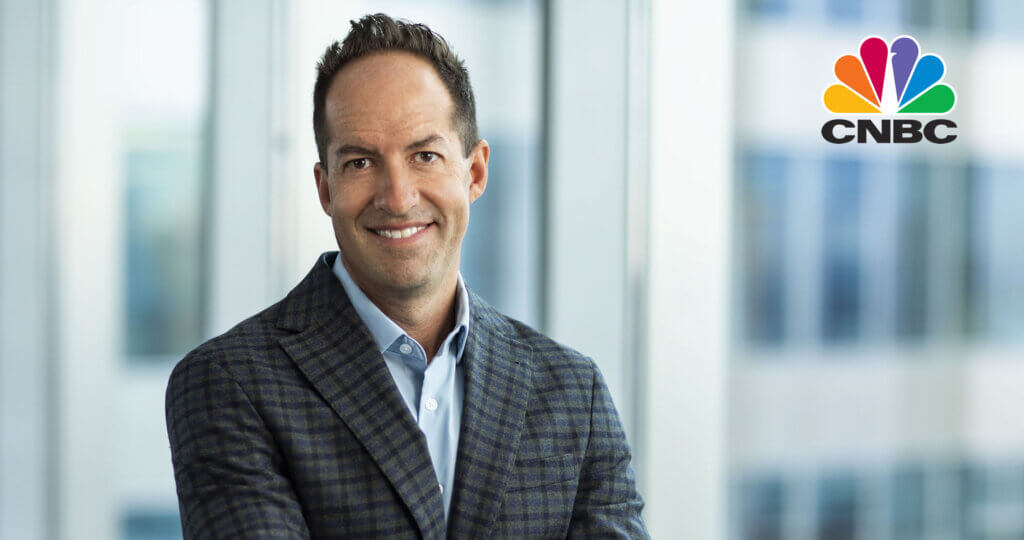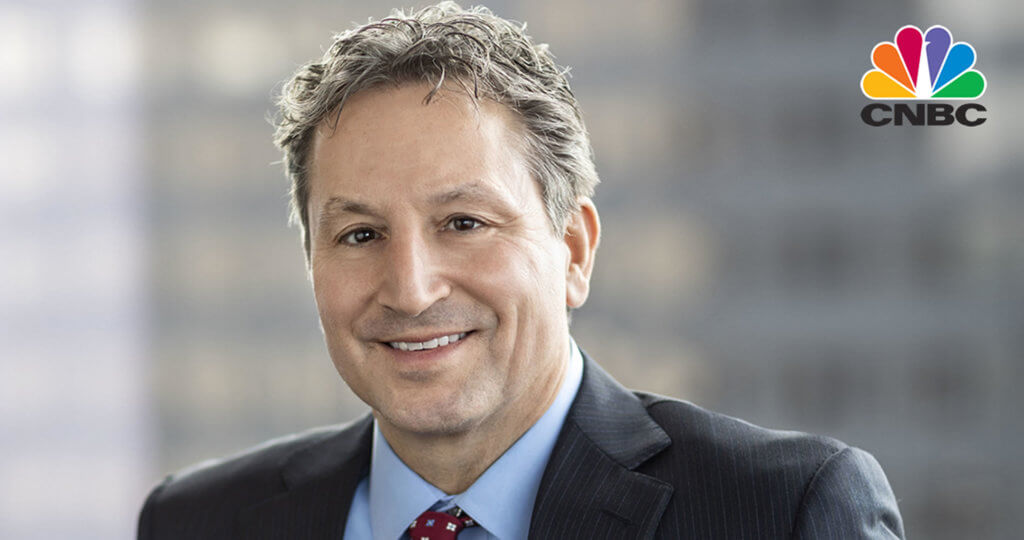Oakmark Global Fund – Investor Class
Average Annual Total Returns 12/31/16
Since Inception 08/04/99 9.91%
10-year 4.65%
5-year 10.83%
1-year 4.65%
3-month 7.63%
Gross Expense Ratio as of 09/30/16 was 1.17%
Past performance is no guarantee of future results. The performance data quoted represents past performance. Current performance may be lower or higher than the performance data quoted. The investment return and principal value vary so that an investor’s shares when redeemed may be worth more or less than the original cost. To obtain the most recent month-end performance data, view it here.
A Populism-Inspired Market?
In writing these reports we probably should not ask questions for which we do not know the answer, and we do not in fact know whether political populism has inspired recent stock market gains. Although many prognosticators warned that political trends in 2016 would be problematic for securities markets, in this event stock markets have proven to be quite resilient. As is often said, “correlation does not imply causation,” and this could be true here. Perhaps the reaction in the U.S. speaks most clearly to this issue. As the votes were being tallied on election night in November, the overnight futures market indicated that an extreme drop would occur when the market opened on Wednesday. But when the opening bell rang, all was far more orderly, and the market eventually rose significantly during the day. We do not know what to expect with the new administration, but it should be interesting. We do worry that U.S. investors have become too optimistic concerning the possibilities for tax and regulatory relief. We are especially glad to see the effect this optimism has had on the Fund’s financial holdings, however. (See the next section for a more detailed discussion)
The Oakmark Global Fund’s three-month return was 8%, which compares to the 2% return in the period for both the MSCI World Index and the Lipper Global Fund Index. For all of calendar 2016, the Fund gained 5%, which contrasts to 8% for both the MSCI World Index and the Lipper Global Fund Index. Since inception in 1999, the Fund has achieved a compound annual rate of return of 10%, which compares to 4% for the MSCI World Index and 5% for the Lipper Global Fund Index.
The U.S., United Kingdom and Switzerland contributed most to the Fund’s return in the quarter while Mexico and China detracted from its return. It is probably easiest to explain the weakness in the Mexican stock market after the U.S. election, given the president-elect’s promises to implement new tariffs. The five largest contributors to the Fund’s return in the quarter were Bank of America (U.S.), CNH Industrial (U.K.), Citigroup (U.S.), Incitec Pivot (Australia) and Credit Suisse (Switzerland). The Fund holdings that detracted most were Tenet Healthcare (U.S.), Grupo Televisa (Mexico), Baidu (China), Diageo (U.K.) and Hirose (Japan).
The calendar year saw the U.S., the U.K. and South Korea contributing most to investment return while Switzerland, France and Australia detracted most. The leading contributors were CNH Industrial, Bank of America, LinkedIn (U.S.—sold), Itron (U.S.) and Union Pacific (U.S.). The largest detractors were Credit Suisse, Tenet Healthcare, BNP Paribas (France—sold), Incitec Pivot and Grupo Televisa.
Financial Recovery
We have written much in 2016 concerning the financials sector, both because of the Global Fund’s large industry allocation and because of the sector’s extreme price volatility. By the middle of February, banking industry stocks in both Europe and the U.S. had suffered double-digit price declines as investors fretted over ever-intensifying regulation and subpar economic growth. In the second quarter, U.K. and European bank stock prices plunged after the Brexit vote. The third quarter witnessed a crisis of confidence over Deutsche Bank as investors considered the possibility of contagion from that institution’s travails. And for much of the year the world has seen a new phenomenon: negative yields on as much as $13 trillion in outstanding debt (primarily sovereign).
In the fourth quarter, however, the financials sector enjoyed a substantial price recovery. U.S. bank stocks ended the year with positive returns, and European and Japanese shares showed double-digit gains in the second half. What has happened to promote this outcome? To quote the December 30 Financial Times, “One of the main causes for optimism is the prospect of higher interest rates as policy gears are seen switching from monetary to fiscal measures in the coming year. Rising long-term bond yields help banks by boosting their net interest margin—the difference between the rates on their borrowing and lending.” Another important factor is the perception that the regulatory environment has stopped worsening. It appears that most of the significant bad behavior penalties have now been assessed and that capital ratios are firmly established. Were corporate tax rates to be reduced in the U.S., banks may even start earning more than their cost of capital. We are not so optimistic as to predict that our financial holdings will return to their pre-2008 profitability levels, but at current share prices we believe that the sector is still attractive.
Portfolio Activity
We initiated one new position in the quarter and eliminated one holding. Both issues are U.K.-domiciled entities. We sold our holding in Smiths Group, a conglomerate active in seals (primarily for the oil and gas sector), healthcare, detection and connectors. Smiths’ new management team had a strong first year at the helm, highlighted by margin improvement at the detection division, the announced acquisition of Safran’s Morpho detection business and a significant de-risking of its U.K. pension plan. We view these developments favorably, as do other investors, and the share price has risen nearly 50% in local currency. However, this increased price more closely reflects our view of the business’ intrinsic value and thus we’ve found more attractive investment alternatives.
Our “new” purchase is actually a return engagement: Travis Perkins. Travis is the largest supplier of building materials in the U.K., serving both the trade market via its Travis Perkins brand as well as the do-it-yourself market via its Wickes brand. The share price came under considerable pressure following the U.K.’s vote to leave the European Union, which we believe provides us with an attractive entry point. Brexit will likely result in a period of slower near-term demand for Travis Perkins, but over the medium term we believe that demand for building materials in the U.K. will grow due to structural shortages of housing stock and infrastructure. We expect Travis will continue to gain market share, given its leading brands and best in class management team.
Although we have repeatedly trimmed U.S. holdings in 2016, the stronger relative performance of U.S. markets has had the effect of keeping the country weight steady. The Fund remains underweight the U.S. relative to its position in the MSCI World Index, and this difference has become more pronounced with the differential in returns in 2016. As always, we do not invest with the benchmark in mind and instead go where we find the most attractive, undervalued equities. Switzerland, the U.K. and Germany are overweight in the Fund versus the index.
Currency Hedges
While the Swiss franc and Australian dollar weakened versus the U.S. dollar during the quarter, we continue to believe they are overvalued. As a result, we defensively hedged a portion of the Fund’s exposure. Approximately 24% of the Swiss franc and 10% of the Australian dollar were hedged at quarter end.
Thank you for being our partners in the Oakmark Global Fund. Please feel free to contact us with your questions or comments.
The securities mentioned above comprise the following percentages of the Oakmark Global Fund’s total net assets as of 12/31/16: Bank of America Corp. 4.5%, CNH Industrial NV 5.1%, Citigroup, Inc. 4.0%, Incitec Pivot, Ltd. 3.1%, Credit Suisse Group AG 4.3%, Tenet Healthcare Corp. 1.0%, Grupo Televisa SAB ADR 2.2%, Baidu, Inc. ADR 2.4%, Diageo PLC 2.3%, Hirose Electric Co., Ltd. 1.5%, CNH Industrial N.V. 5.1%, LinkedIn Co. 0%, Itron, Inc. 1.7%, Union Pacific Corp. 2.6%, BNP Paribas SA 0%, Smiths Group PLC 0%, Safran SA 0% and Travis Perkins PLC 2.4%. Portfolio holdings are subject to change without notice and are not intended as recommendations of individual stocks.
Click here to access the full list of holdings for The Oakmark Global Fund as of the most recent quarter-end.
The quoted passage is taken from the December 30, 2016 Financial Times article titled, “Doubts Dog Banking Sector’s Comeback” by Thomas Hale and Dan McCrum.
The MSCI World Index (Net) is a free float-adjusted market capitalization weighted index that is designed to measure the global equity market performance of developed markets. This benchmark calculates reinvested dividends net of withholding taxes using Luxembourg tax rates. This index is unmanaged and investors cannot invest directly in this index.
The Lipper Global Funds Index measures the performance of the 30 largest mutual funds that invest in securities throughout the world. This index is unmanaged and investors cannot invest directly in this index.
The Fund’s portfolio tends to be invested in a relatively small number of stocks. As a result, the appreciation or depreciation of any one security held by the Fund will have a greater impact on the Fund’s net asset value than it would if the Fund invested in a larger number of securities. Although that strategy has the potential to generate attractive returns over time, it also increases the Fund’s volatility.
Investing in foreign securities presents risks that in some ways may be greater than in U.S. investments. Those risks include: currency fluctuation; different regulation, accounting standards, trading practices and levels of available information; generally higher transaction costs; and political risks.
The percentages of hedge exposure for each foreign currency are calculated by dividing the market value of all same-currency forward contracts by the market value of the underlying equity exposure to that currency.
The discussion of the Fund’s investments and investment strategy (including current investment themes, the portfolio managers’ research and investment process, and portfolio characteristics) represents the Fund’s investments and the views of the portfolio managers and Harris Associates L.P., the Fund’s investment adviser, at the time of this letter, and are subject to change without notice.
All information provided is as of 12/31/2016 unless otherwise specified.







